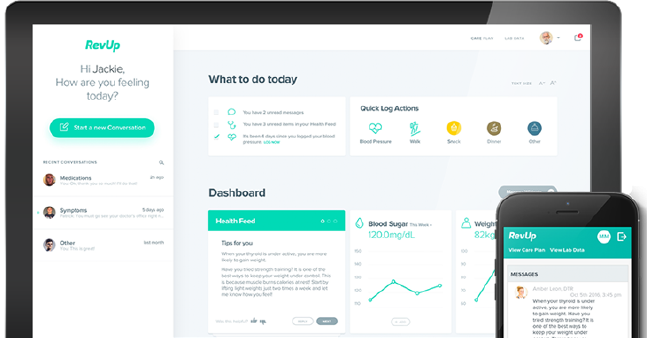Secure Remote Patient Monitoring Software: Securing Patient Data
Secure Remote Patient Monitoring Software: Securing Patient Data
Blog Article
The Future of Healthcare: Remote Person Keeping An Eye On Simplified
As health care proceeds to evolve, one area that holds enormous pledge is remote patient surveillance. With a focus on boosting patient results and improving medical care shipment, remote surveillance is poised to reinvent the market.
Benefits of Remote Client Surveillance
Remote individual surveillance offers a multitude of advantages for both medical care providers and patients alike. Additionally, remote patient surveillance improves the total high quality of treatment by offering a more all natural and comprehensive view of individuals' health and wellness condition beyond traditional in-person gos to.
Furthermore, remote client surveillance can result in better patient end results and satisfaction. Individuals can appreciate the comfort of getting care in the convenience of their very own homes while still recognizing that their health is being closely kept an eye on. This can lead to boosted client engagement and adherence to treatment strategies, eventually bring about much better health results. Furthermore, remote tracking can minimize the need for constant healthcare facility brows through, decreasing health care prices for both clients and carriers. Overall, the benefits of remote client monitoring are clear, making it an important tool in contemporary medical care delivery.
Innovation Driving Remote Tracking
In the realm of modern medical care, technological developments play a pivotal role in driving the evolution and effectiveness of remote client monitoring. The integration of ingenious technologies such as wearable devices, mobile applications, and cloud-based platforms has actually reinvented the means doctor from another location check and handle individual health and wellness - rpm software. These innovations enable continuous real-time tracking of important signs, medication adherence, and other crucial health data, enabling for prompt interventions and individualized treatment plans
One secret modern technology driving remote monitoring is the Net of Points (IoT), which allows smooth connectivity in between medical tools and health care systems. IoT devices such as smartwatches and cordless sensors accumulate and transfer person information to central systems, assisting in remote monitoring from anywhere in the world. Fabricated knowledge (AI) and equipment knowing formulas additionally enhance remote surveillance by evaluating huge quantities of patient data to discover patterns, forecast health and wellness trends, and sharp medical care carriers to possible problems.
Effect On Medical Care Shipment
With the combination of sophisticated technologies driving remote client surveillance, the influence on medical care delivery is ending up being transformative and significantly extensive. Remote individual monitoring enables doctor to use more individualized and positive like clients, leading to enhanced health and wellness end results and lowered hospital admissions. By remotely tracking important indications, symptoms, and medication adherence, healthcare professionals can interfere early, avoiding complications and enhancing the overall top quality of care.
Furthermore, remote tracking boosts accessibility to healthcare solutions, specifically for people in underserved or rural areas. Patients can receive continuous surveillance and support from their homes, removing the need for constant in-person sees. This not just saves time and reduces expenses for both individuals and healthcare facilities yet also reduces the danger of direct exposure to contagious illness, an important factor to consider in the existing medical care landscape.
In addition, remote patient surveillance enables doctor to far better assign resources and prioritize treatment based upon real-time information. By recognizing high-risk individuals and intervening without delay, health care distribution ends up being much more reliable and effective, ultimately causing an extra lasting and patient-centered medical care system.
Improving Client End Results

Moreover, RPM enables positive management of chronic problems, minimizing the chance of intense exacerbations and health center readmissions. Patients profit from enhanced benefit and comfort, as they can get care in their very own homes while staying connected to their health care companies. This continuous tracking not only improves person contentment however additionally fosters a sense of empowerment and involvement in their very own health and wellness administration.
Future Trends in Remote Tracking
Accepting innovative modern technologies in remote client monitoring is forming the future landscape of medical care delivery. The future fads in remote monitoring are expected to revolutionize the method medical care is offered, making it a lot more effective and patient-centric. One considerable trend is the enhanced use wearable tools and sensing units to collect real-time information, enabling doctor to keep track of clients continually without the need for frequent in-person gos to. These tools can track vital indications, medication adherence, and activity levels, offering an extensive sight of the patient's wellness condition.

Additionally, telehealth systems are ending up being more sophisticated, permitting virtual assessments, remote medical diagnosis, and remote client keeping an eye on done in one integrated system (software for remote patient monitoring). This alternative technique to remote monitoring is improving health care delivery, boosting patient complete satisfaction, and inevitably, boosting general high quality of treatment
Final Thought
To conclude, remote patient monitoring offers various benefits in medical care shipment, driven by innovations in technology. It has the potential to improve person results webpage and transform the way healthcare is provided. Future fads in remote surveillance will remain to form the landscape of medical care, offering possibilities for even more efficient and personalized client treatment.
Remote patient monitoring offers a look here plethora of advantages for both healthcare providers and clients alike. Additionally, remote individual monitoring improves the total high quality of treatment by providing an extra all natural and detailed sight of individuals' wellness standing beyond traditional in-person sees.
Furthermore, remote patient tracking can lead to enhanced patient outcomes and contentment. Remote client surveillance enables healthcare carriers to supply even more positive and tailored care to people, leading to improved health outcomes and minimized health center admissions. Remote individual surveillance (RPM) plays a significant function in boosting person outcomes by offering continual, real-time information that allows health care service providers to interfere quickly and change therapy strategies as required.
Report this page